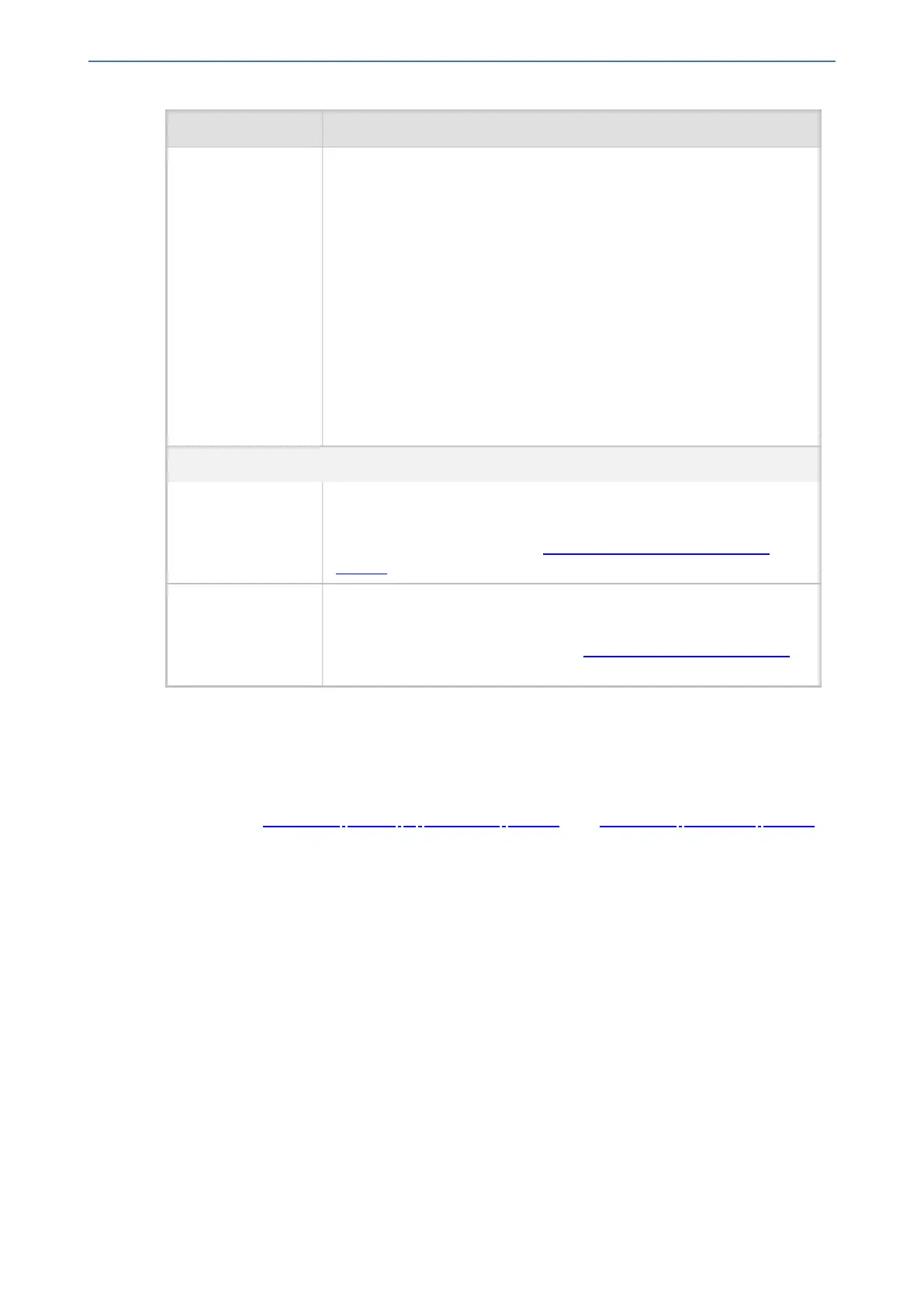CHAPTER18 Core Entities
Mediant 1000 Gateway & E-SBC | User's Manual
Parameter Description
'Default Media
Realm'
is-default
[CpMediaRealm_
IsDefault]
Defines the Media Realm as the default Media Realm. The default
Media Realm is used for SIP Interfaces and IP Groups for which you
have not assigned a Media Realm.
■ [0] No (default)
■ [1] Yes
Note:
■ You can configure the parameter to Yes for only one Media Realm;
all the other Media Realms must be configured to No.
■ If you do not configure the parameter (i.e., the parameter is No for
all Media Realms), the device uses the first Media Realm in the
table as the default.
■ If the table is not configured, the default Media Realm includes all
configured media interfaces.
Quality of Experience
'QoE Profile'
qoe-profile
[CpMediaRealm_
QoeProfile]
Assigns a QoE Profile to the Media Realm.
By default, no value is defined.
To configure QoE Profiles, see Configuring Quality of Experience
Profiles.
'BW Profile'
bw-profile
[CpMediaRealm_
BWProfile]
Assigns a Bandwidth Profile to the Media Realm.
By default, no value is defined.
To configure Bandwidth Profiles, see Configuring Bandwidth Profiles.
Configuring Remote Media Subnets
Remote Media Subnets define destination subnets for media (RTP/SRTP) traffic on a specific
Media Realm. Each Remote Media Subnet can be assigned different call quality (Quality of
Experience Profile) and bandwidth utilization (Bandwidth Profile) profiles. These profiles are
configured in Configuring Quality of Experience Profiles and Configuring Bandwidth Profiles ,
respectively. Thus, you can apply these profiles to remote media subnets instead of Media Realms
or IP Groups. You can configure up to five Remote Media Subnets per Media Realm.
The figure below illustrates an example for implementing Remote Media Subnets. IP Group #2
represents a SIP Trunk which routes international (USA and India) and local calls. As international
calls are typically more prone to higher delay than local calls, different Quality of Experience
Profiles are assigned to them. This is done by creating Remote Media Subnets for each of these
call destinations and assigning each Remote Media Subnet a different Quality of Experience
Profile. A Quality of Experience Profile that defines a packet delay threshold is assigned to the
international calls, which if crossed, a different IP Profile is used that defines higher traffic priority to
voice over other traffic. In addition, IP Group #2 has a 10-Mbps bandwidth threshold and a "tighter"
bandwidth limitation (e.g., 1 Mbps) is allocated to local calls. If this limit is exceeded, the device
rejects new calls to this Remote Media Subnet.
- 318 -

